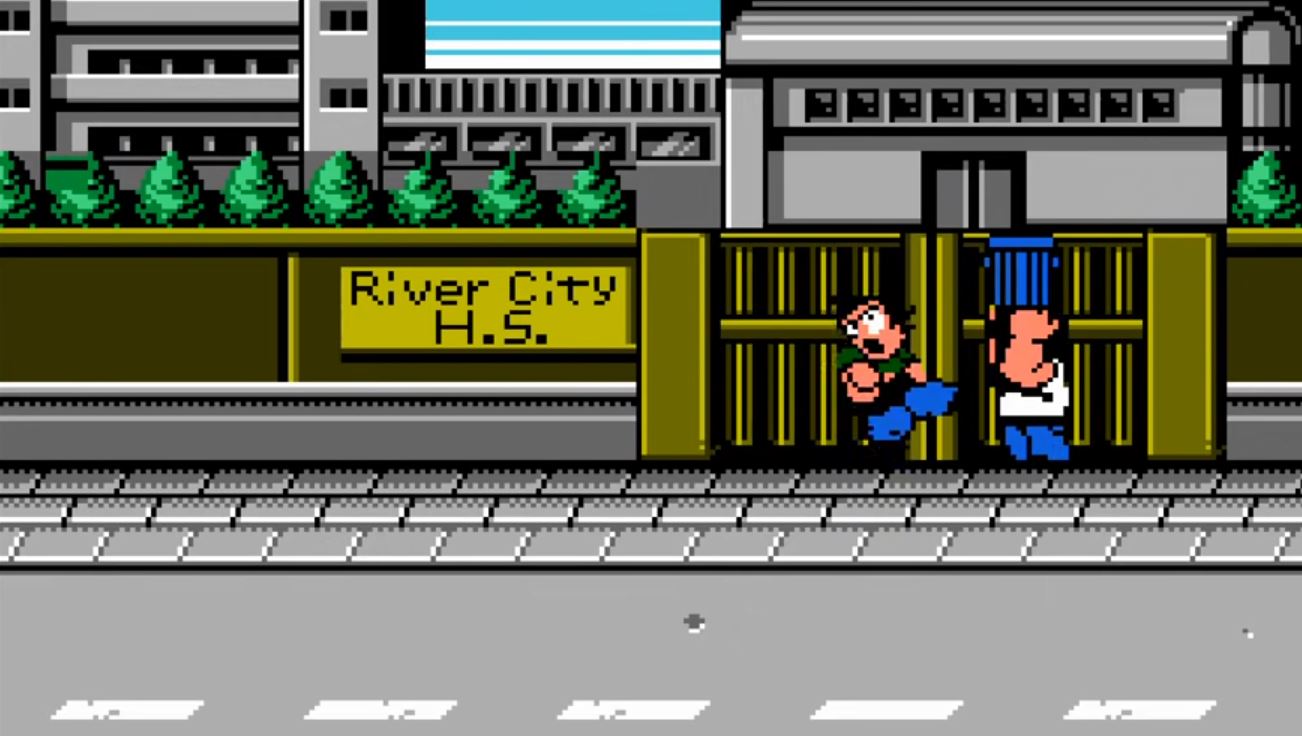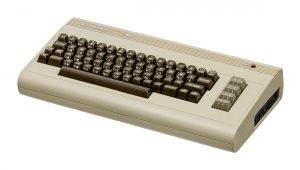
Since its release 35 years ago today, River City Ransom has enjoyed a remarkable cultural turnaround. Today, it is typically described as one of the best NES games ever and a turning point in the evolution of the beat-em-up genre.
For much of its existence, though, River City Ransom was often simply considered a cult classic. It was always a strange little game that not everyone immediately gelled with. Many critics and fans throughout the years have expressed mixed feelings towards the title. Others have been far more negative. Then again, the more mixed receptions to the game over the years really shouldn’t be too surprising.
At the time of its release (and for some time afterward) there was nothing quite like River City Ransom. At a glance, it looked just like Double-Dragon: the beat-em-up title that most obviously influenced River City Ransom’s development. Once you started playing the game, though, you were greeted with an unfamiliar, and often alienating, style of game design.
Rather than have you work your way through a series of linear levels as other titles in the genre asked you to do, River City Ransom placed you in a grid-like environment that could be explored a bit more freely. You never quite knew where the next path would take you until you were able to uncover the full map. That style of level design has been referred to as an early example of what we now consider the open-world genre.
However, River City Ransom’s level design was actually closer to a modern Soulsborne title in ways that might help explain why it was so alienating. Beyond the “Where am I supposed to go?” confusion that the game’s layout generated, River City Ransom had a bad habit of implementing severe difficulty spikes in seemingly random ways. The most logical path forward may be filled with enemies that you are not yet capable of defeating. Those who weren’t turned off by the thrill of being immediately destroyed through no apparent fault of their own were forced to grind through “lesser” areas to progress. In that sense, River City Ransom is actually a bit more linear than it may initially appear to be.
Even if that process sounds closer to a nightmare than an innovation, the fact that River City Ransom forced you to “grind” at all reveals the significance of its most influential idea: its use of traditional RPG mechanics.
Defeating enemies in River City Ransom would often reward you with coins that could be used to purchase entirely new combat techniques, better equipment, or upgrades to one of your 10 primary character stats. Said stats determined everything from the base power of your punches and kicks to your ability to avoid being knocked down. Though your reaction times and ability to recognize enemy attack patterns mattered as much in River City Ransom’s combat as those factors did in games like Double Dragon (if not more), River City Ransom was designed to make you feel like all of those otherwise seemingly simple encounters were gradually contributing to something greater.
It was a seemingly simple twist that felt positively inspired in its day. While some early pseudo-ARPGs experimented with a combination of real-time combat and character upgrades (such as Hydlide, Gauntlet, and The Legend of Zelda), River City Ransom was something else entirely. It was, by just about any definition, fundamentally an action game. For that matter, it was a beat-em-up game: the most action-heavy of the action genres available at that time. Yet, River City Ransom added genuine depth to its action by incorporating a surprisingly robust character-building system previously only seen in what were considered to be niche and fairly “hardcore” genre titles.
While River City Ransom certainly had its flaws, it’s hard not to wonder why more action titles didn’t follow in its footsteps in the years immediately following its release. Many of the most notable beat-em-up games of the early ’90s (particularly Konami’s beloved licensed arcade titles) didn’t utilize their own versions of similar RPG mechanics. That combination of real-time combat and character growth was still largely limited to a new generation of ARPGs. Games like Super Adventure Island II and Demon’s Crest certainly feel a bit closer to River City Ransom, but for quite some time, gamers didn’t necessarily expect to encounter traditional role-playing mechanics in their action games.
The situation now is quite different. In the last 20 years or so, we’ve seen a sometimes shocking influx of action games with RPG-like character-building systems. Ignoring obvious River City Ransom successors like Scott Pilgrim vs. the World and River City Girls, we find aspects of River City Ransom’s core design concept in nearly every major modern action title. From Call of Duty and God of War to Hi-Fi Rush and Yakuza, more and more games that rely on real-time action combat also feature systems that require you to upgrade your character along the way. If anything, it’s jarring to play a modern action title that doesn’t offer some version of that idea.
The evolution of the action genre has forced us to view River City Ransom in a different light. What once felt like an odd duck in the NES library now feels like one of those rare retro games you can revisit and enjoy as it was originally intended to be enjoyed. If anything, it’s gotten a bit better over the years. Whereas a generation of gamers once wondered what, exactly, River City Ransom was and how to engage with it, a legion of modern action fans can pick it up and immediately say to themselves “Oh, it’s one of those games.”
Yet, that same quality has further complicated River City Ransom’s historically complicated legacy. Some feel that the widespread embrace of RPG elements in action games has diminished the intended impact of that idea. A mechanic that was once meant to add depth to arcade-like action experiences sometimes results in games that feel stuck between a half-hearted action title and a half-hearted RPG.
You’re not alone if you shudder at the sight of yet another bare-bones skill tree in an action game. The less said about games that use such systems as an excuse to push microtransactions, the better. In that sense, it’s easy to imagine someone looking at River City Ransom and seeing it as the antithesis of the more “pure” 8-bit action games they’d like to see more of in the modern era.
In River City Ransom’s defense (if such a thing is even necessary), it was always built on an idea that has proven to be easy to forget over the years. River City Ransom aspired to offer a beat-em-up experience that was as good as (if not better than) every other beat-em-up game out there. From there, developer Technōs Japan Corp wanted to offer a little something extra that made that fundamentally entertaining experience more rewarding.
Even in the game’s flaws, we find proof that even the best ideas can be compromised by their execution. RPG-like mechanics can’t make a game great but they can add genuine and welcome depth to an already great action experience that is looking to offer just a little bit more. All these years later, it seems River City Ransom is the little game with a big idea that still has so much to teach us.
The post 35 Years Ago, River City Ransom Invented The Modern Action Game appeared first on Den of Geek.







